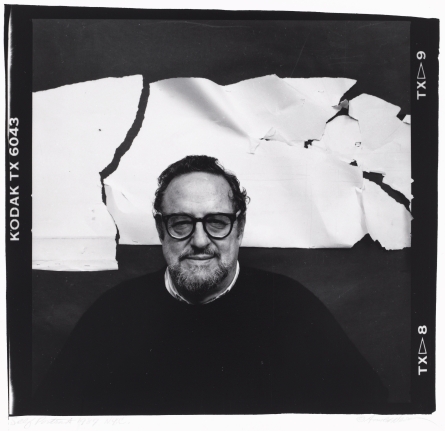
An Arnold Newman "selfie" from 1987. Image credit: The Jewish Museum
One of my favorite parts of the Harry Ransom Center’s current exhibition on Arnold Newman is the way it resists chronology. Newman’s photographs are organizes by particular attention to one of ten elements of Newman’s photography as artistic practice: “searches,” “choices,” “fronts,” “geometries,” “habitats,” “lumen,” “rhythms,” “sensibilities,” “signatures,” and “weavings.” What results is an exhibit that resists a notion of Arnold Newman’s transformation over time. Instead, the exhibit suggests, audiences might read Newman by his unique manipulation of photography’s formal elements throughout his entire career.
The resistance to chronology is apparent, too, in the weaving, wandering nature of the physical exhibit. Temporary half-walls throughout the exhibition space designate no beginning or end point for audiences. Instead, the exhibit inspires audiences to accept Newman’s particular artistic practice across ten themes as definitive criteria for photographic excellence, and therefore evidence for celebrating the photographer himself.
Such a construction has encouraged me to think about the relationship between celebrated photographer and celebrated subject. Are there ways that these two categories inform each other in the case of Arnold Newman? Can we trace, even amidst the Harry Ransom Center’s achronological curation, a chronological shift in fame from photographer to photographed? How does fame work as a mechanism for those who garner fame by representing it and perhaps cultivating it? Can those who represent fame create it as well?
Recent comments
2 years 29 weeks ago
2 years 44 weeks ago
2 years 44 weeks ago
2 years 50 weeks ago
3 years 4 weeks ago
3 years 4 weeks ago
3 years 4 weeks ago
3 years 6 weeks ago
3 years 6 weeks ago
3 years 6 weeks ago